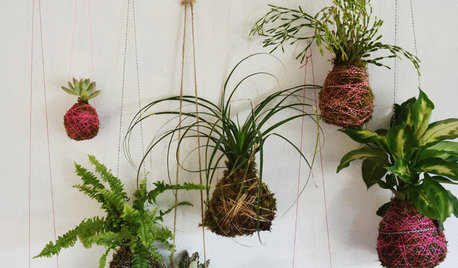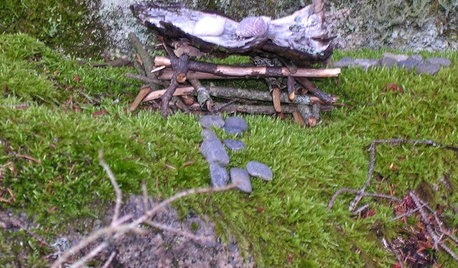Peat Moss and Blueberries
smalltimeberry
15 years ago
Related Stories

EDIBLE GARDENSSummer Crop: How to Grow Blueberries
Plant blueberries in spring or fall for garden beauty through three seasons — and a sweet superfood in summer
Full Story
HOUSEPLANTSBaby Tears Mimics Moss for a Green Accent Indoors
This adaptable spreader thrives in water or soil, making it a terrific addition to containers and living walls
Full Story
HOUSEPLANTSDIY Project: How to Make a ‘Kokedama’ String Garden
Dig in to create a simple, beautiful Japanese-inspired hanging garden
Full Story
FUN HOUZZSomething a Little Different: Fairy Houses
Miniature abodes crafted for otherworldly creatures capture the imagination
Full Story
SAVING WATERHouzz Call: Are You Letting Go of Your Lawn?
Many facing a drought are swapping turf for less thirsty plantings. If you’re one of them, we’d like to hear about it
Full Story
GARDENING GUIDESWhat Are Your Spring Gardening Plans?
Tearing out the lawn? Planting edibles? Starting from scratch? Tell us what you plan to change in your garden this year
Full Story
FARM YOUR YARDHow to Grow Vegetables in Containers
Get glorious vegetables and fruits on your patio with a pro’s guidance — including his personal recipe for potting mix
Full Story
GARDENING GUIDESGrow a Beautiful Garden in Alkaline Soil
Got alkaline soil? Learn how to manage it and the many beautiful plants that will thrive in this ‘sweet’ soil
Full Story
FALL GARDENING7 Reasons Not to Clean Up Your Fall Garden
Before you pluck and rake, consider wildlife, the health of your plants and your own right to relax
Full Story
GROUND COVERSGround Force: 10 Top Ground Covers for Your Garden
Protect your soil from weeds and drought this summer with a living mulch of ground covers
Full Story






gargwarb
oldmainer
Related Professionals
Maple Valley Landscape Architects & Landscape Designers · Signal Hill Landscape Architects & Landscape Designers · Bedford Heights Landscape Contractors · Bellefontaine Neighbors Landscape Contractors · Fair Lawn Landscape Contractors · Holtsville Landscape Contractors · Pomona Landscape Contractors · Winchester Landscape Contractors · Elkridge Decks, Patios & Outdoor Enclosures · Adrian Decks, Patios & Outdoor Enclosures · Grand Rapids Decks, Patios & Outdoor Enclosures · North Aurora Decks, Patios & Outdoor Enclosures · Rocklin Decks, Patios & Outdoor Enclosures · Roseville Decks, Patios & Outdoor Enclosures · Saint Louis Park Decks, Patios & Outdoor Enclosuresjeannie7
gargwarb
Kimmsr
gargwarb
gargwarb
smokensqueal
tiffy_z5_6_can
reg_pnw7
grizz299
Mackel-in-DFW
Kimmsr
toxcrusadr
gardengal48 (PNW Z8/9)